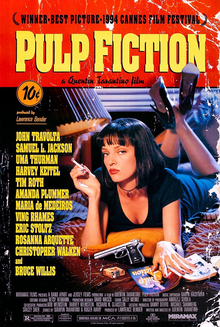It's hard to say what age I first read Robert E. Howard's Conan books. Other kids read them, but it looked over the top. When I did give it try, it was swamped in ornate, awkward language. I looked down my nose at Howard's work. How could any serious reader imbibe this garish garbage?
I happened to read another Howard story where the prose was lean and spare. And I was stunned. The guy could control his language. What at first appeared as an inability to write was actually an intentional, atmospheric construct. So I revisited Conan and came to appreciate its appeal.
I often try things multiple times. Sometimes we miss things the first time around.
Howard died at thirty, in 1936, before any of his stories were collected into books. The first collections, twenty years later, would have probably been similar to other popular magazine collections that publishers were publishing at the time, looking to capture the post WWII interest in books.
But what about the ordering? As he aged and he might have felt differently toward his characters; he might he have created a more consistent series of novels about this barbarian. The work itself had already suggested a progression of character. Might he not want to clean them up for public?
Conan went through several paperback editions a decade later. L. Sprague de Camp tried to put the series in order and wrote material that put Conan together in an order that made sense to him. The editions stirred up enough interest to fight the legal battles that would eventually become the most popular Conan film: the 1982 Conan the Barbarian, putting Arnold Schwarzenegger on the Hollywood map. There were several subsequent attempts--live action and animated--but they seemed unable to recapture the public's interest.
The 2000s tried to attempted to create a more Howard-centric chronology. This modest revival of interest in Conan may have led to Imaro's revival:
 #
#
Charles Saunders' Imaro is a book I'd been meaning to get to. In the 70s, Saunders had been inspired by Conan to write several of his own stories, leading to a few appearances in the fantasy annuals and a 1981 mosaic collection and two sequels, but the second novel took him three years to write, and by then his audience was dwindling and he was unable to finish the series. The publishers weren't interested in a fourth novel.
I'd expected Conan in Africa, but the prose was more controlled. Some might complain that it doesn't rise to Conan's inventiveness, but it has something over Howard's invention: the feel of a novel. The stories build on what's gone before, and Imaro grows from what he's gone through. The past impacts the present. Saunders infused some maturity on the tales. I'd have loved to do a comparison of the early tales and the two subsequent novel versions.
Twenty years after Imaro's first book publication, a fan out of Australia encouraged him to resurrect the character and finish the series. So he did. At first, when the fan contacted him, he didn't have much interest as he'd moved away from this type of work, but he got back into it and found a publisher.
He excised one story from the series because of it's possible connection to political events in Rwanda that mirrored what he'd written first. Much as one admires his desire to have his fiction not cause damage, it also makes me want to read the original to see what he wanted removed. He revised and added new material. It might be worthwhile to compare the two editions.
Anyway, if you like Conan or are curious about a Conan-type character who experiences growth, this is an interesting book.

